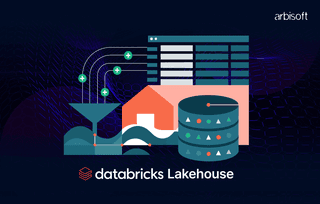We put excellence, value and quality above all - and it shows




A Technology Partnership That Goes Beyond Code

“Arbisoft has been my most trusted technology partner for now over 15 years. Arbisoft has very unique methods of recruiting and training, and the results demonstrate that. They have great teams, great positive attitudes and great communication.”
AI Model Compression Part VII: From Vision to Understanding - The Birth of Attention

The Attention Revolution
In the quiet halls of libraries, scholars have long known a fundamental truth: understanding isn't about processing every word, but knowing where to focus. Watch a master reader's eyes dance across a page, they don't read linearly, but jump between key points, building connections. This human capability would inspire one of AI's most profound revolutions: the attention mechanism.
Building on the foundations of convolutional neural networks explored in The Ancient Art of Seeing, this blog examines how attention mechanisms revolutionized AI by mimicking the human ability to focus selectively.
The Limits of Sequential Processing
Before attention, our networks were like overworked students trying to memorize every word in a textbook. RNNs and LSTMs processed information sequentially:

Like trying to understand a painting by looking through a narrow tube, one small section at a time. But this wasn't how humans processed information. We needed something more dynamic, more... human.
The Mathematics of Focus
The Attention Mechanism: Quantifying Relevance
The mathematics of attention tells a story as old as consciousness itself, the story of choosing what matters, further enhanced by deep learning solutions that refine model precision:

Think of this like a detective investigating a crime:
- The Query is the clue they're trying to understand
- The Keys are all the evidence they've gathered
- The Score tells them which pieces of evidence matter most
But the real magic happens in the full attention formula:

The Softmax Story: Making Choices
The softmax function in attention is perhaps one of the most elegant mathematical expressions of decision-making:

The Transformer Architecture: A New Kind of Intelligence
Multi-Head Attention: Multiple Perspectives
The transformer's genius wasn't just attention, it was parallel attention:

Think of it like a panel of experts:
- Each head is an expert with a different focus
- They all examine the same information
- Their insights combine into a richer understanding
Position Embeddings: The Paradox of Order
But here's where the story takes a fascinating turn. Unlike RNNs, transformers had no inherent sense of sequence. They needed to learn the position:

This isn't just mathematics, it's the encoding of time itself into the fabric of artificial understanding.
The Optimization Challenge: Balancing Power and Efficiency
The Complexity Paradox
As transformers grew more powerful, they faced a fundamental challenge:

The Birth of Efficient Attention
This led to a new chapter in our story, the quest for efficient attention:
Sparse Attention Patterns:
Full Attention: Sparse Attention:
[1 1 1 1 1] [1 0 1 0 1]
[1 1 1 1 1] → [0 1 0 1 0]
[1 1 1 1 1] [1 0 1 0 1]
[1 1 1 1 1] [0 1 0 1 0]
[1 1 1 1 1] [1 0 1 0 1]


Like learning to focus only on key moments in a conversation, rather than every single word.
The Compression Revolution
Modern techniques introduced remarkable optimizations:

























